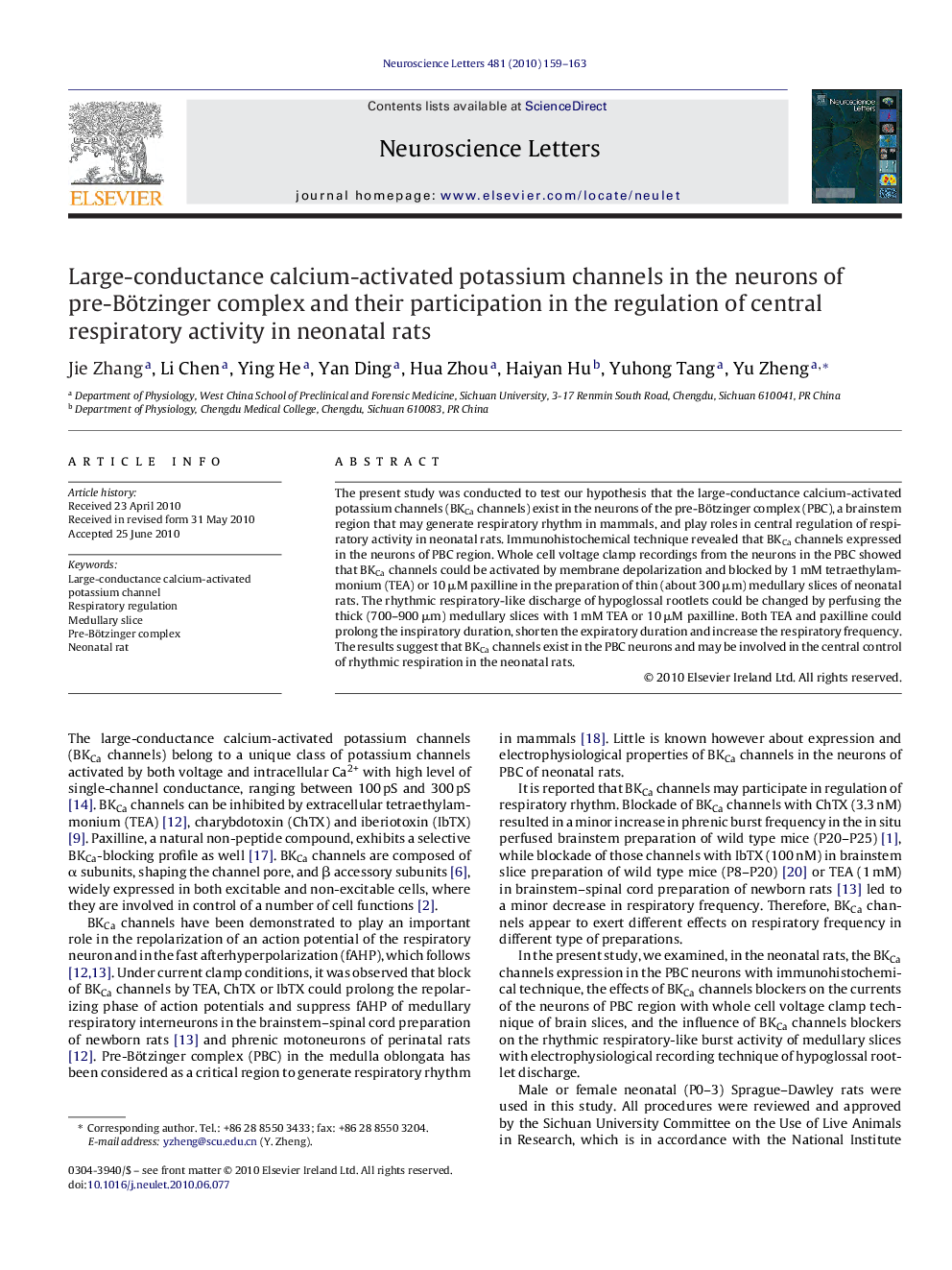| Article ID | Journal | Published Year | Pages | File Type |
|---|---|---|---|---|
| 4345675 | Neuroscience Letters | 2010 | 5 Pages |
The present study was conducted to test our hypothesis that the large-conductance calcium-activated potassium channels (BKCa channels) exist in the neurons of the pre-Bötzinger complex (PBC), a brainstem region that may generate respiratory rhythm in mammals, and play roles in central regulation of respiratory activity in neonatal rats. Immunohistochemical technique revealed that BKCa channels expressed in the neurons of PBC region. Whole cell voltage clamp recordings from the neurons in the PBC showed that BKCa channels could be activated by membrane depolarization and blocked by 1 mM tetraethylammonium (TEA) or 10 μM paxilline in the preparation of thin (about 300 μm) medullary slices of neonatal rats. The rhythmic respiratory-like discharge of hypoglossal rootlets could be changed by perfusing the thick (700–900 μm) medullary slices with 1 mM TEA or 10 μM paxilline. Both TEA and paxilline could prolong the inspiratory duration, shorten the expiratory duration and increase the respiratory frequency. The results suggest that BKCa channels exist in the PBC neurons and may be involved in the central control of rhythmic respiration in the neonatal rats.
